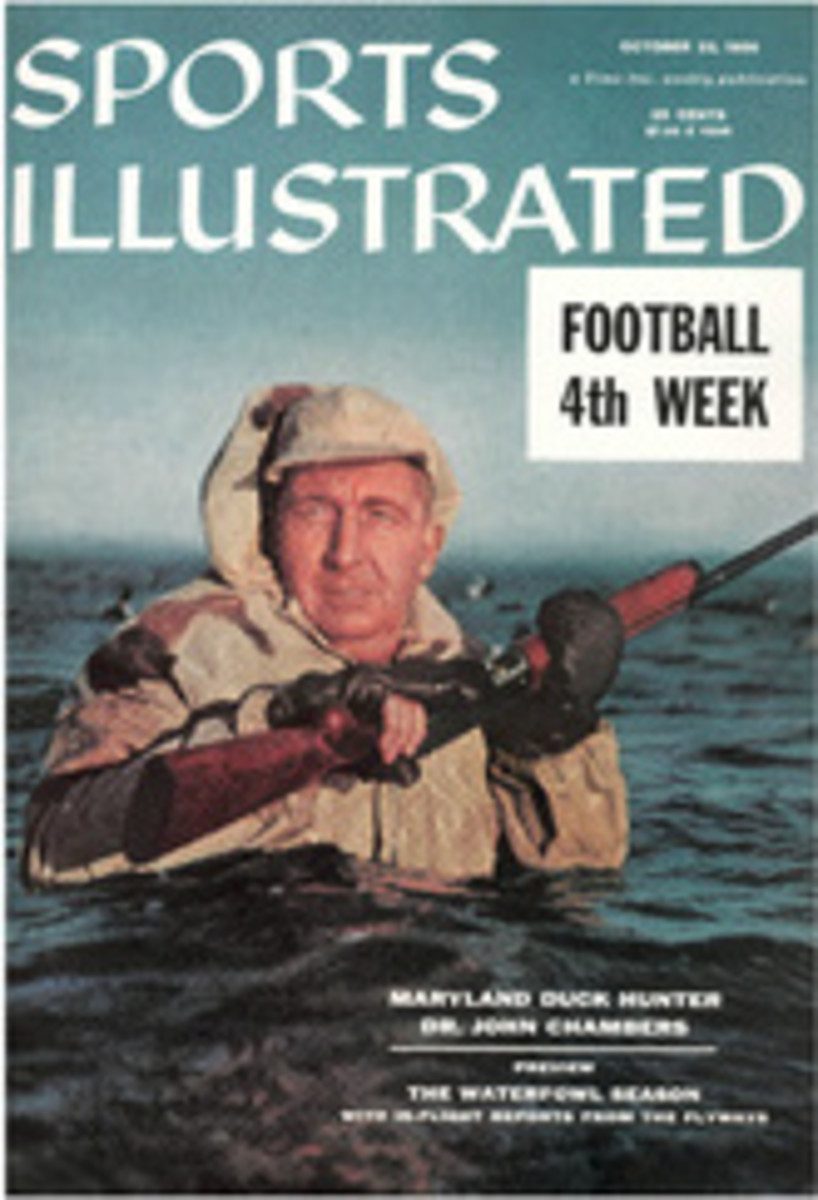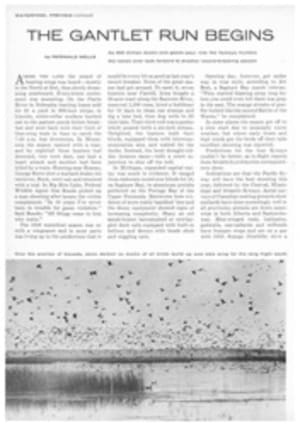
Joel Barber's Decoys
EVER SINCE the first American Indian fashioned a crude likeness of a duck out of straw and mud and with it lured his evening meal down to arrow range, man has made decoys. The Indians went on to make them with stuffed skins and roughly hewn wooden images; the colonists saw and copied the Indian devices, and decoy making became an art. It is one of America's few native crafts and even today, in the work of dedicated wildfowlers, it survives unchanged.
In the last century, decoy making has come of age, with artists both primitive and modern bending their talents to create these hand-carved tools of deception. In spite of mechanical progress and modern mass production the hand-crafted decoy still maintains its place of honor on the current hunting scene.
It remained, however, for a New York architect—Joel Barber—to create for decoys the place they deserve in American folk art. Barber's interest in them started when he found a battered decoy in a loft on Long Island. Stimulated by this find, he began to search for more such relics. Later he wrote a definitive book on the subject, and his collection became the yardstick by which all others were judged. Craftsmanship, design, functionability, artistry and history determined the choice of decoys which shared his workshop. They represent the finest waterfowl lures in America.
Joel Barber died in January 1952 at his workbench in Wilton, Conn. finishing a decoy head. Next May his famed collection, never before publicly available in its entirety, will be on permanent exhibition at the Shelburne Museum, near Burlington, Vt.
THE BEST OF THE BARBER COLLECTION: Assembled above is a representative sampling of the best and most unusual in the Joel Barber decoy collection. Below the canvas-winged flying brant (top, left) are, from left to right, confidence decoys (top shelf): Barnegat tip-up, black duck, surf scoter, two Wilson snipe, herring-gull profile; historical decoys (second shelf): primitive stick-up, pintail, old Japanese decoy, goldeneye, red-breasted merganser, Lake Champlain redhead, ruddy duck; experimental decoys (third shelf): oversize canvasback, aluminum canvasback, redhead, rubber pintail and, facing left, a female red-breasted, the decoy discovered at Babylon, L.I., which started Barber on his more than 30 years of decoy collecting. At far right is another confidence decoy, a stick-up heron from the Jones Beach, L.I. area. Bottom shelf shows examples of fine craftsmanship: mallard drake by Barber, black duck by Chambere, canvasback by Ward, mallard drake by Wheeler, bluebill drake by Holmes and black duck by Barber.
PHOTO
BOB SMALLMAN

